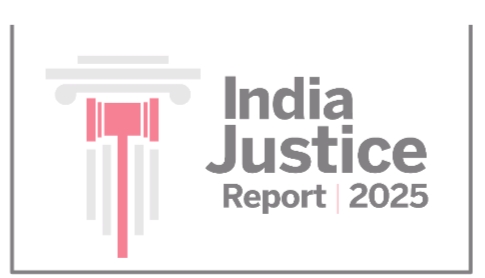- Vedaanta Senior Living Launches Vyom, A Revolutionary In-House Tech Platform to Elevate Senior Care
- GainTools Relaunches Advanced OST to EML Converter for Seamless Email Migration
- Pixel Web Solutions Introduces White-Label Trust Wallet Clone Script to Power Secure, Scalable Web3 Wallets
- Endoacustica Launches Micro GSM Quad-Band Spy Bug for Global Covert Surveillance
- Altra Enterprise Expands Range of Premium Stainless Steel Pipes for Industrial and Commercial Applications
- Infinix GT 30 5G+ Goes on Sale on August 14 on Flipkart, Starting at a Special Price of ₹17,999
- Enlite Reveals Refreshed Brand Identity, Marking a New Chapter in Built World Intelligence
- AAFT Hosts Grand Cultural Showcase on the Inauguration of Its 125th Batch
- India's First Community-Led B2B Marketing Event 'UnBoxed' Debuts in Bangalore
- Pixel Web Solutions Expands DeFi Development Services to Accelerate Financial Decentralization
- Dr. Agarwal’s Health Care Limited announced its Q1 FY2026 Total Income soars by 22.3% YoY to INR 501 Crores
- 4Closure Rescue Introduces Community Housing Stability Workshops to Combat Rising Foreclosure Risks
- Future Electronics Showcases Infineon’s Smart Building Solutions for Energy-Efficient, Secure, and Scalable Automation Systems
- Tata Motors brings Kerala together this Onam with exciting Products and Great Benefits
- Britain’s Top Businessman Sukhpal Singh Ahluwalia to Return back to roots to contribute to the India’s Development
 Mail to a Friend Mail to a Friend |
|
     |
Less than 1000 women senior officers in India’s 20.3 lakh police force, says 2025 India Justice Report

15 April, New Delhi: The 2025 India Justice Report (IJR), India’s only ranking of states on delivery of justice in the country, released today, has revealed that India’s 20.3 lakh strong police force has less than 1000 women officers in senior ranks like Superintendents and Director-Generals. Including non IPS officers, the number is just over 25,000. Women officers in non-IPS ranks comprise just 8% of the 3.1 lakh total officers, with 90% of women in police in the constabulary.
The IJR, a unique periodic report, ranks Karnataka first overall, with the state retaining its top spot among the 18 Large and Mid-sized states (with populations of over one crore each). It was followed by Andhra Pradesh, climbing from fifth in 2022 to second, Telangana (2022 ranking: 3rd), and Kerala (2022 ranking: 6th).
The five southern states dominated the rankings, owing to better performance across the four pillars in comparison to other states. Karnataka is the only state that met its caste quotas (SC, ST, and OBC) in both the police (at the constabulary and officer level) as well as in the district judiciary. Kerala has the lowest vacancy among High Court judges. Tamil Nadu performs the best in prisons with one of the lowest occupancy rates (77%, compared to the national average of over 131%). Telangana and Andhra Pradesh also outperform other states, particularly with regards to the Police, ranking 1st and 2nd on that pillar respectively.
Sikkim (2022 ranking: 1st), topped the table among the seven Small States (with populations less than one crore each), followed by Himachal Pradesh (2022: 6th), and Arunachal Pradesh (2022: 2nd). Among other states, between IJR 2022 and 2025, Bihar recorded the most improvement, followed by Chhattisgarh and Odisha. Uttar Pradesh and Uttarakhand also performed better than 7 other states including Haryana, Telangana, and Gujarat on the improvement scorecard (See: Improvement Scorecard in Infographics).
The India Justice Report (IJR) was first initiated by Tata Trusts, with the first ever ranking published in 2019. This is the fourth edition of the report, in collaboration with partners including the Centre for Social Justice, Common Cause, Commonwealth Human Rights Initiative, DAKSH, TISS–Prayas, Vidhi Centre for Legal Policy, and How India Lives, IJR’s data partner.
Discussing the India Justice Report, Justice (Retd.) Madan B. Lokur commented, “The punishing process of accessing justice begins with the very first encounter an individual has with the system. With our failure to properly equip and train frontline justice providers—police stations, legal aid actors including paralegal volunteers and district courts—we fracture public trust. These institutions are intended to embody our commitment to equal justice. The strength of our entire justice framework rests on these critical first points of contact. The fourth edition of the India Justice Report points out that improvements remain few and far between in the absence of adequate attention given to resources. Alas, the burden continues to remain on the individual seeking justice, and not the state to provide it.”
Ms. Maja Daruwala, Chief Editor, India Justice Report, highlighted, “As India moves forward into a hundred years of being a democratic, rule of law nation, the promise of rule of law and equal rights will remain hollow unless underwritten by a reformed justice system. Reform is not optional. It is urgent. A well-resourced responsive justice system is a constitutional imperative that must be experienced as an everyday reality available to every citizen.”
Through a rigorous 24-month quantitative research, the IJR 2025, similar to the previous three, has tracked the performance of states in capacitating their Justice delivery structures to effectively deliver mandated services. Based on the latest official statistics from authoritative government sources, it brings together otherwise siloed data on the four pillars of Justice delivery – Police, Judiciary, Prisons, and Legal Aid. Each pillar was analysed through the prism of budgets, human resources, workload, diversity, infrastructure, and trends (intention to improve over a five-year period), against the state’s own declared standards and benchmarks. This edition also separately assesses the capacity of the 25 State Human Rights Commissions (see SHRC brief for more) and consists of essays on mediation and access to justice for persons with disabilities.
Company :-Weber Shandwick
User :- Harsh Sinha
Email :-hsinha@webershandwick.com











